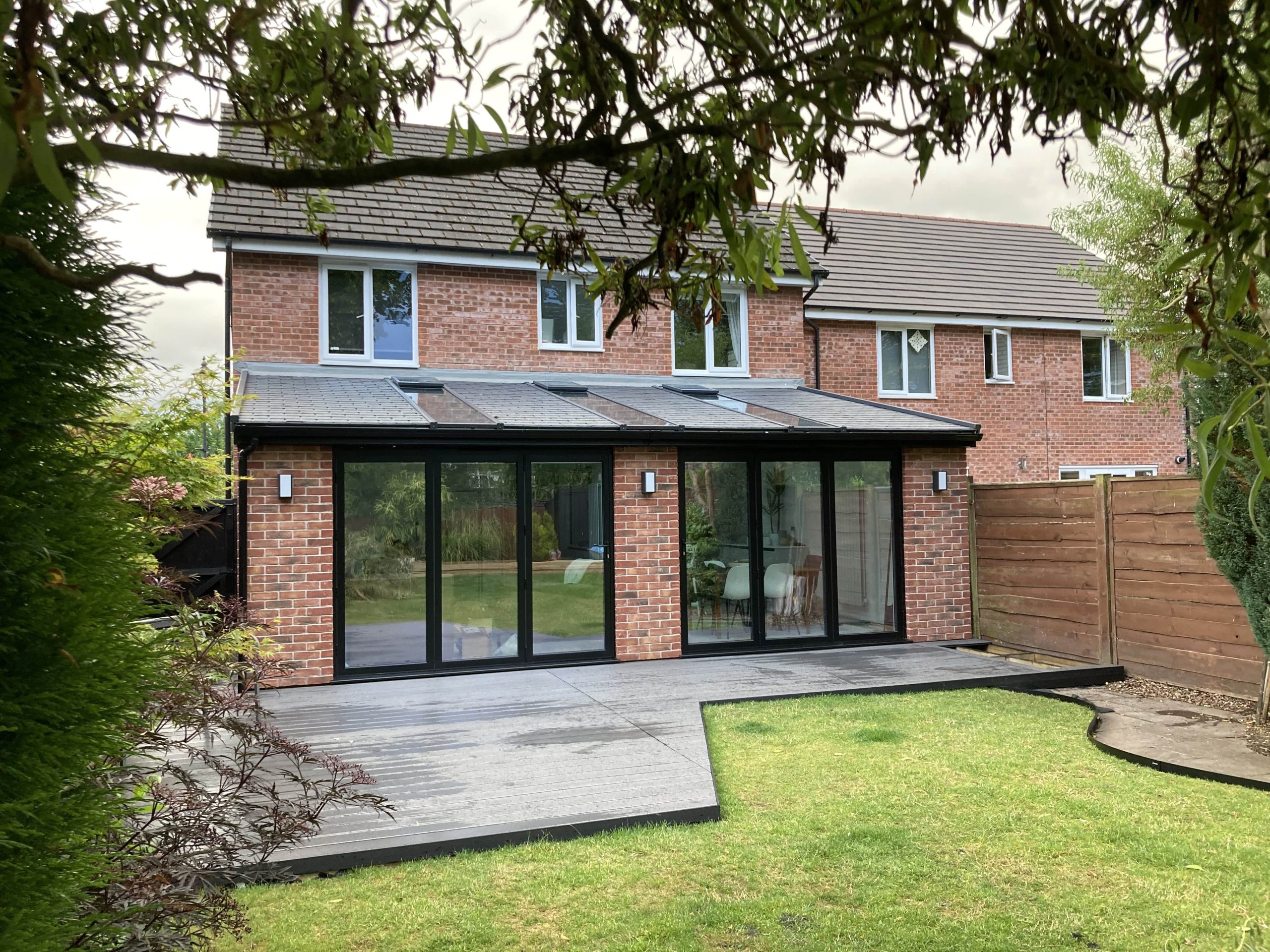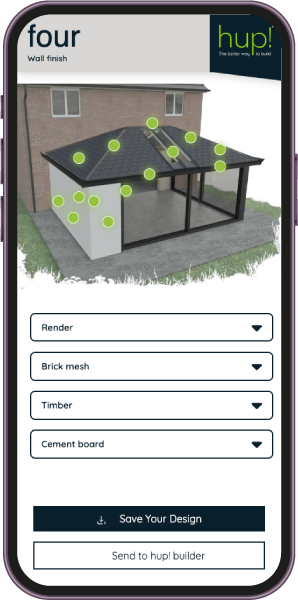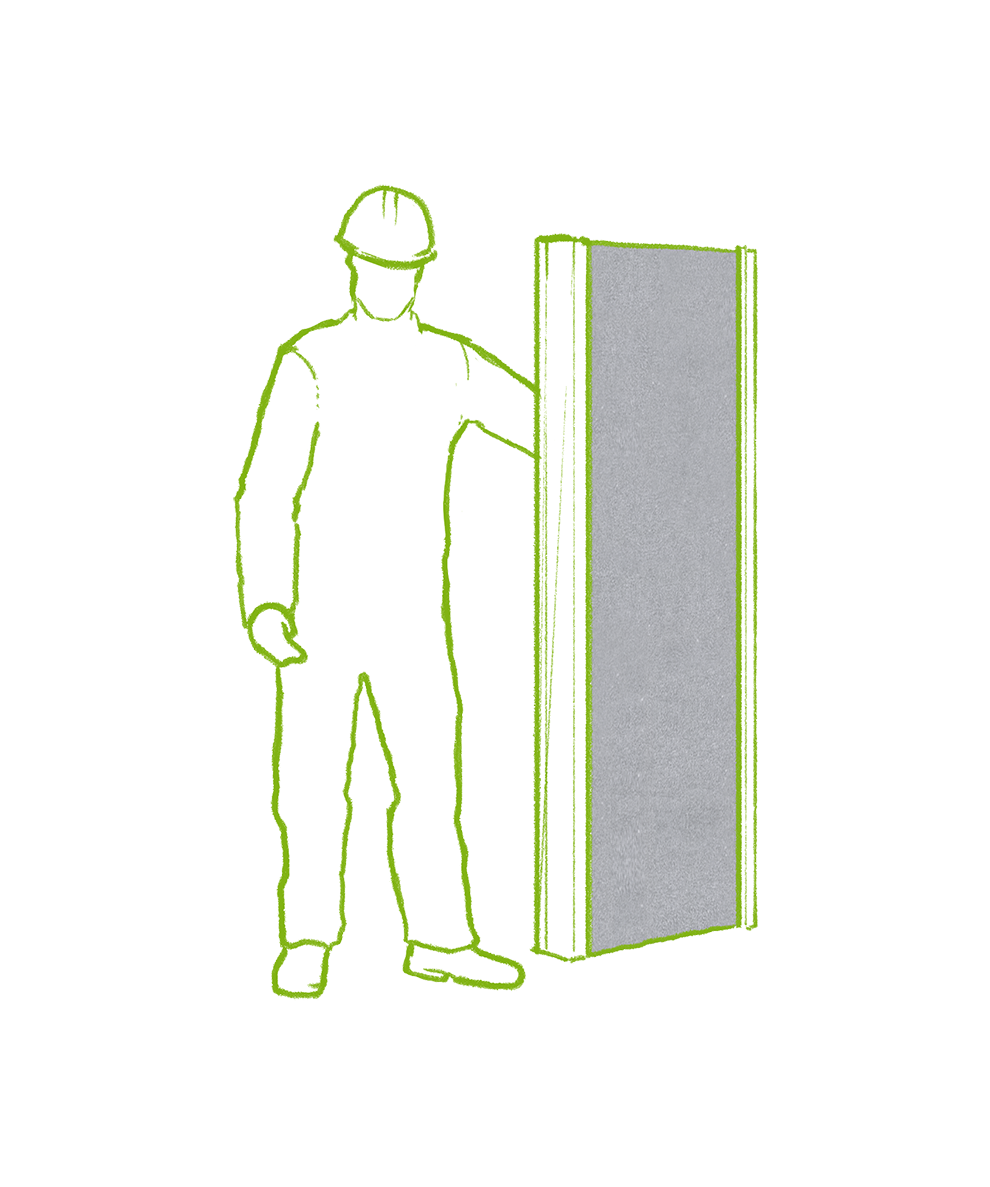There is no doubt that modular extensions do offer a number of benefits vs those constructed using traditional building methods such as bricks and mortar.
The key benefit they offer is speed, as they are comprised of rooms/modules that arrive on site fully fabricated – often including internal components such as plastering or electrics – to be quickly bolted together. Modular extensions can also be extremely cost-effective and offer reduced disruption during a build vs an extension built from bricks and mortar.
However, modular extensions do come with many potential disadvantages. A better option is a prefabricated (prefab) extension such as the hup! building system which does not have any of the downfalls of a modular system.
Here are some of the most common disadvantages to choosing a modular extension – and how these can be avoided by choosing a prefab system instead:
| Disadvantage | Modular Extensions | hup! Prefabricated System |
| Limited Design Flexibility | Restricted by standardized modules with pre-installed services like plumbing/electrics. | Full design flexibility, allowing placement of windows, walls, and doors as desired. |
| Matching/Integration Challenges | Difficult to match materials and style with the host house. Limited external finish options. | Offers bespoke design with a wide range of external finishes like brick slips, cedar cladding, etc. |
| Transportation and Installation | Large modules may have transportation challenges and require cranes; complex logistics. | Easier transportation and assembly with smaller, more manageable components. |
| Upfront Costs | Cranes and road closures may increase costs, reducing savings compared to traditional builds. | Pre-approved system, reducing unexpected costs and complexities. |
| Approval Process | May face lengthy approval processes, especially if unfamiliar to planning officers. | Pre-approved for simple Building Regulation compliance, easier approval process. |
| Financing Difficulties | May face issues with financing if not accredited or recognised by lenders. | BBA accreditation, pre-approved for compliance, making it easier to secure financing. |
| Potential for Damage During Transportation | Susceptible to transportation damage, leading to delays and costly repairs. | More resilient, with less chance of damage due to smaller, more manageable components. |
| Long-Term Maintenance | May require more maintenance over time due to material quality. | Designed for a 60+ year lifespan with minimal maintenance, offering long-term durability. |
| Potential for On-Site Issues | Limited room for adjustments or changes once modules are on-site. | More flexibility for on-site adjustments, with components assembled separately. |
Limited Design Flexibility
Modular extensions often rely on standardised components and modules, which can restrict the level to which your extension can be customised to create a design that matches your vision. This is especially true of modular extension systems that arrive on site with services such as plumbing and electrics already in place – leaving no option for input as to where they should be. Prefab extension systems such as hup! offer complete design flexibility, allowing you to choose exactly where in the design you place windows, walls and doors.
Matching/Integration Challenges
It can often be difficult to match the materials and style of a modular extension to the host house, as these systems typically offer a small number of options. Again, with a prefab system, they are far more bespoke and allow homeowners to choose from a wide range of external finishes to complement or contrast with their home, including brick slips, render, cedar cladding and more.
Transportation and Installation
As the modules that arrive on site for modular extensions are so large (room-sized), the transportation and access to site can be very challenging and costly. Areas with limited access or narrow roads will struggle with modular extensions to a level where they may become prohibitive. For areas/sites that are suitable to accept a modular extension, the logistics are often complex as crane are often needed and contractors may need to work with local agencies to arrange road closures.
Upfront Costs
The initial investment required to arrange cranes and road closures where required, may mean that any potential savings vs building traditionally are lost.
Approval Process
As with any extension, modular extensions must comply with Building Regulations and Planning Permission must be sought if required. The hup! prefab system is pre-approved for simple Building Regulation approval but if a modular system is not known to the planning officer, the process to obtain approval may be lengthy. Planning Permission covers the aesthetics of an extension and how sympathetic it is to the local area. The limited design options in terms of external aesthetics on a modular system can cause problems with Planning Permission if there is nothing available that meets the requirements of the planning officer.
Financing Difficulties
It is totally possible to get a mortgage to finance a modular extension project. Lenders may ask further questions about a modular system if it does not carry independent accreditation such as that provided by the BBA and which requires stringent independent testing before being awarded. The hup! prefab system DOES have BBA accreditation and is pre-approved for Building regulation compliance and so would not typically face any issues re finance via a mortgage.
Potential for Damage During Transportation
Modular units can be susceptible to damage during transportation, which can cause delays and require costly repairs.
Long-Term Maintenance
Depending on the quality of materials used, modular extensions may require more maintenance and repairs over time compared to traditionally built extensions. Choosing a system such as hup! which carries BBA accreditation for an expected lifespan of 60+ years (the maximum offered by the BBA) provides reassurance against tiresome and costly long term maintenance beyond what is to be reasonably expected on any extension.
Potential for On-Site Issues
While modular construction offers controlled factory conditions, addressing on-site issues or making last-minute changes during the assembly process can be challenging. With a prefab system, the build still follows a similar pattern to that of a traditional build with walls, roof and windows/doors brought to site as separate components and then assembled – giving some room for adjustments via on-site tolerances. As modular systems arrive on site as pre-constructed full rooms/modules, there is very little room for any on site tolerances that may be needed.
As you can see, modular extension systems do offer a number of benefits but there are a large number of disadvantages. If you are looking to build without using traditional construction methods, then a prefab system such as hup! is a far better choice.








